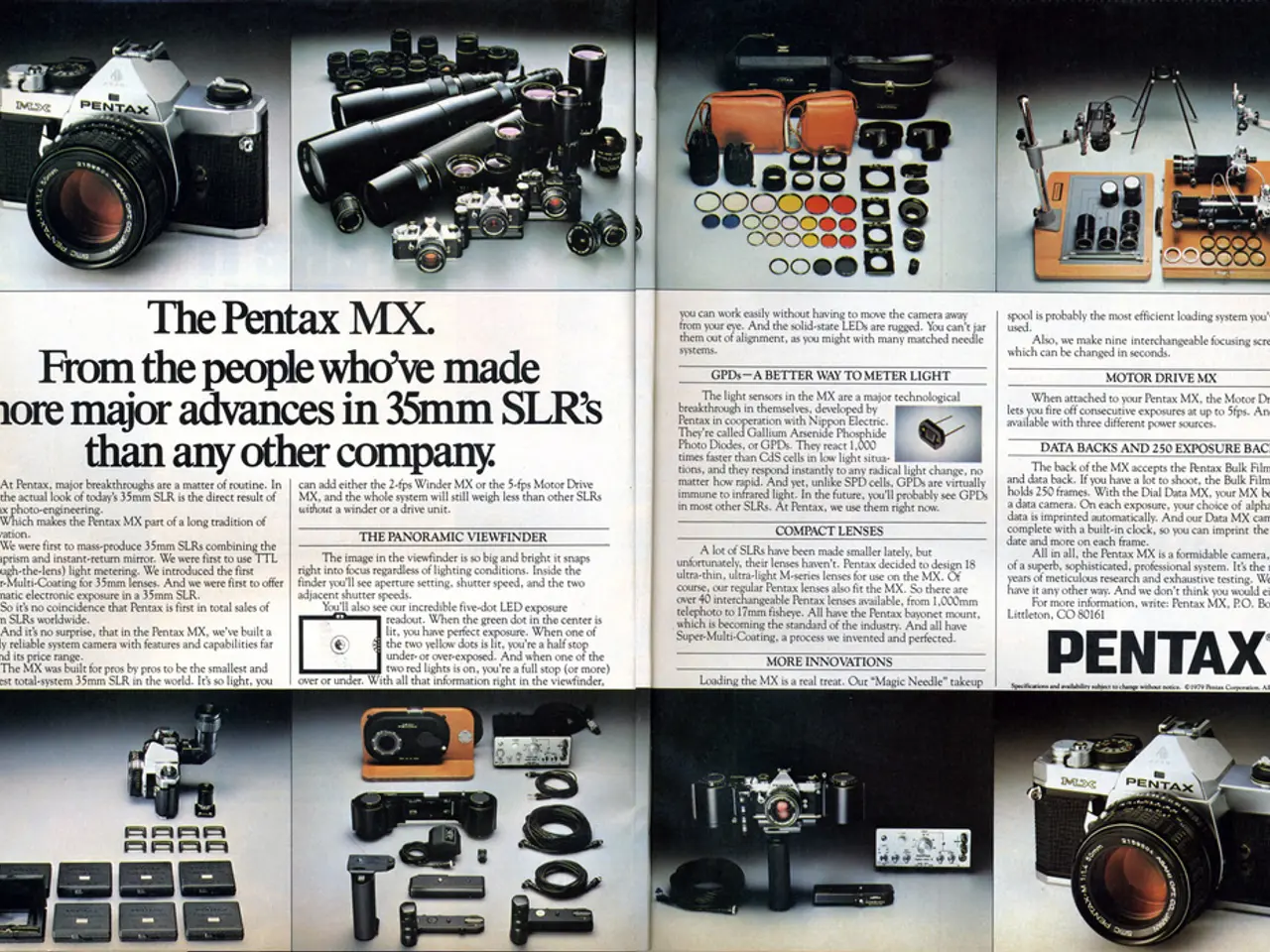Assessment of Garmin's inReach Messenger Plus: An In-depth Analysis
### Garmin inReach Messenger Plus: A Leap Forward in Satellite Messaging
In the realm of satellite communication devices, the Garmin inReach Messenger Plus stands out as a significant upgrade from its predecessor, the original inReach Messenger. This new model, tailored for a niche audience requiring voice notes or image messaging via satellite, offers enhanced capabilities particularly in dense forests and canyons.
Both devices boast good satellite coverage via the Iridium network and perform well in challenging environments. The original Messenger, with a high transmit power of approximately 3.9 watts, supports multiple satellite constellations, aiding in lock and reliability under heavy canopy. The Messenger Plus, on the other hand, is about 20–30% faster in general message sending speed, with most text messages sent in under 2 minutes on both devices. However, photo messages can still take 10 minutes or longer in dense forest conditions, indicating some environmental limits remain.
One of the key improvements in the Messenger Plus is its ability to handle larger message sizes (up to 1600 characters without breaking up), improved voice messaging (audio file sending), and photo messaging, which the original Messenger does not handle as well or at all. Voice notes and images are particularly useful in emergencies, offering more comprehensive communication.
Both units use the same Iridium Short Burst Data system, but the Plus’s upgraded hardware and software allow for bigger, faster file transfers. The Messenger Plus also supports tapbacks and emojis, similar to modern smartphone messengers.
When it comes to battery life, the Messenger Plus impresses with an impressive 600-hour battery life in low-power mode, sufficient to send about 250 photos or voice memos before needing a recharge. This represents a substantial endurance for extended outdoor use. In heavy use, the battery life will be less but remains excellent given the device’s advanced power management.
For users who prioritize advanced messaging, multimedia capabilities, and longer battery life, the Messenger Plus is a significant upgrade, though at a higher price point ($500 vs. around $300 for the original). However, for those who do not need voice or image messaging, the original Messenger or devices with navigation like the Mini 2 or GPSMAP 67i are more cost-effective options.
The Messenger Plus is compatible with the Garmin Explore app for navigation features. Garmin has also updated their subscription plans for the Messenger Plus to accommodate image and voice messages, but these plans are expensive. An inReach subscription cost calculator has been created to help determine the actual cost based on usage.
In conclusion, the Messenger Plus is a more advanced and efficient choice for challenging environments and multimedia communication, while still maintaining excellent battery performance. The original Messenger remains a reliable option but is more limited in message features. It is recommended to keep the Messenger Plus in low power mode unless frequent communication is expected. Users can send voice notes and images via satellite when paired with a phone, and these features could be crucial in a real emergency situation. Photos and voice notes offer significant advantages in emergency situations, such as sending images of injuries or describing situations using voice instead of text messages.
- The Garmin inReach Messenger Plus, in contrast to its predecessor, offers improved voice notes and image messaging capabilities, which are particularly useful in emergencies and challenging forest environments.
- The Messenger Plus, with its upgraded hardware and software, facilitates larger, faster file transfers, supporting tapbacks and emojis similar to modern smartphone messengers.
- The Messenger Plus boasts an impressive battery life of 600 hours in low-power mode, sufficient to send about 250 photos or voice memos before needing a recharge, making it ideal for extended outdoor use.
- For those who prioritize advanced messaging, multimedia capabilities, and longer battery life, the Messenger Plus is a significant upgrade, although it comes with a higher price tag compared to the original Messenger or navigation-focused devices like the Mini 2 or GPSMAP 67i.




